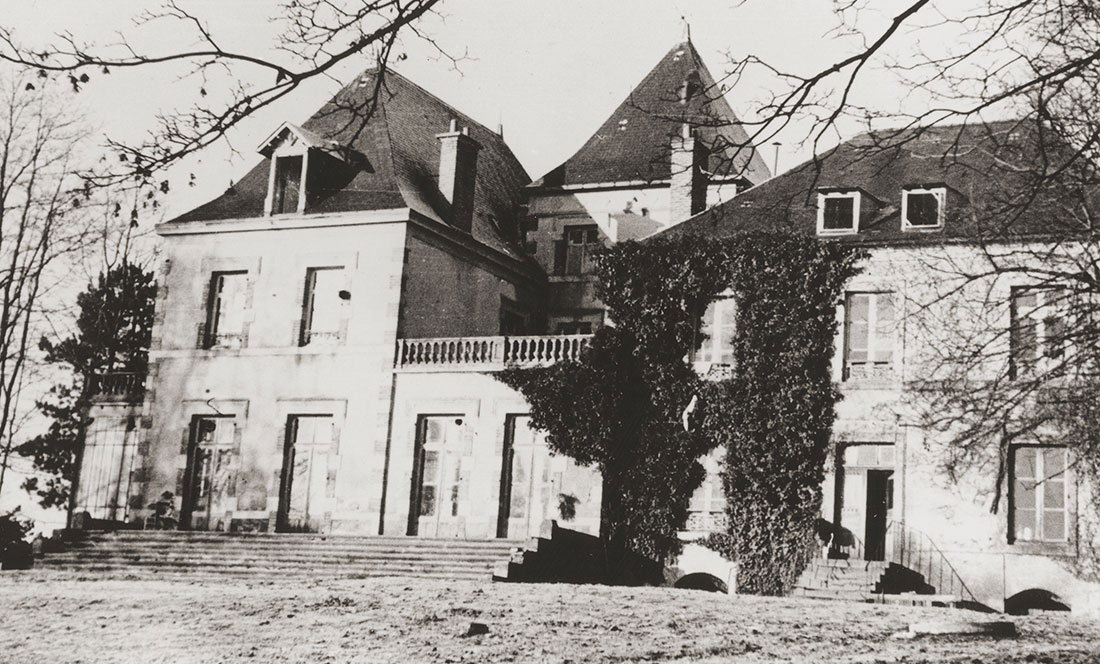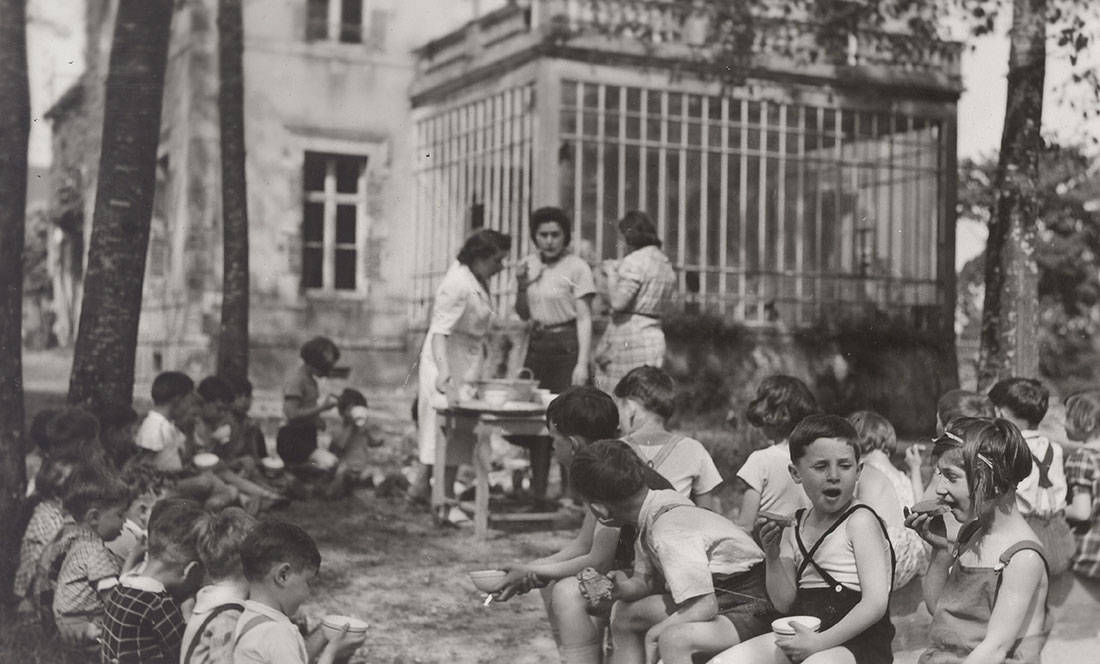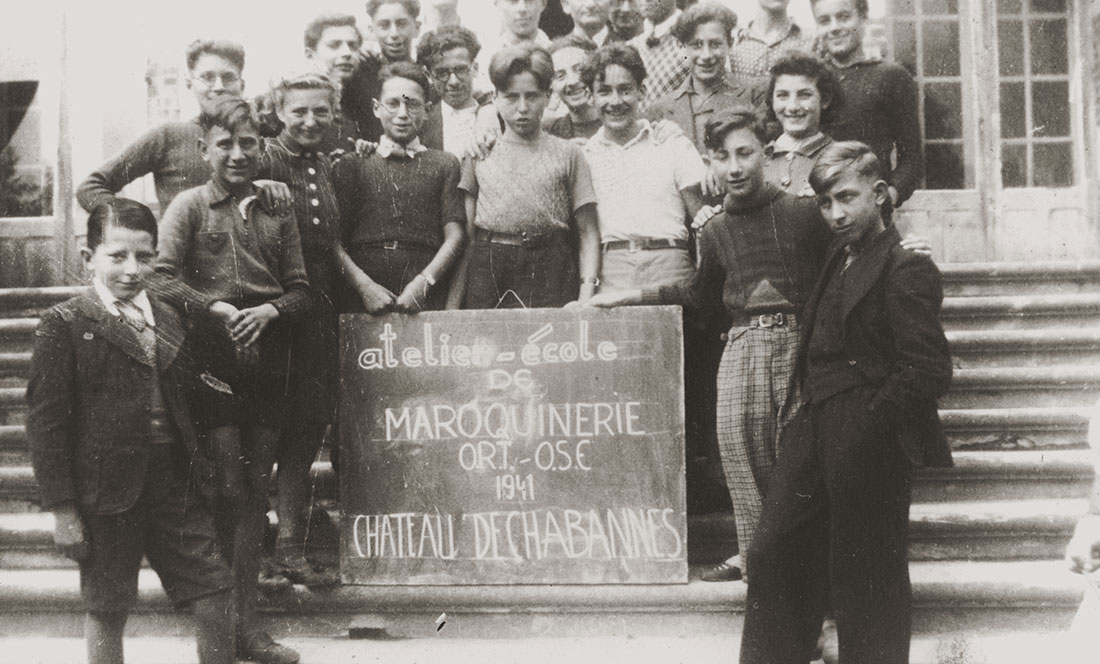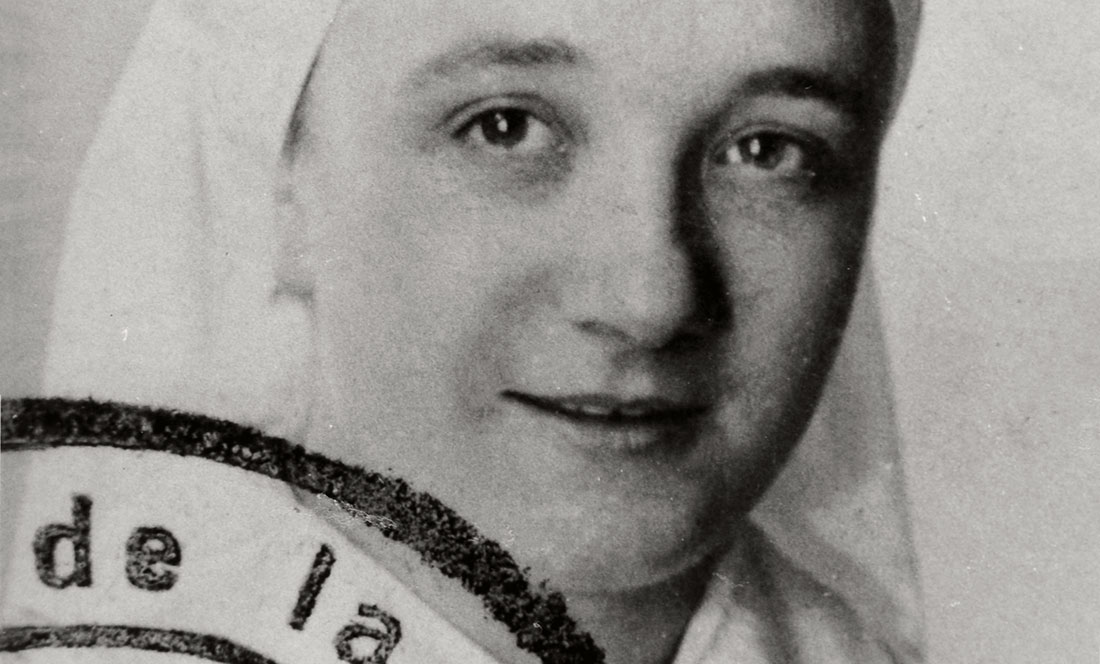Château de Chabannes
Overview
"The children in our care laughed during the day and cried at night"
(Ces enfants dont nous avions le charge riarient le jour et pleuraient la nuit) Rachel Plodmacher-Levine
Between November 1939 and January 1944, the children's home in Chabannes in central France provided a safe haven for 284 children. Château de Chabannes was an OSE home run by Felix Chevrier – journalist, musician, social activist and later Righteous Among the Nations. Many of the staff were Jewish, most not French citizens. When the children's home first opened in Chabannes, it was a legal institution known to the French authorities. The staff was registered in the town hall, and some had ID cards, residential papers or work permits.
Children aged 5-18 lived in Chabannes for weeks, months or even years. The sleeping quarters were arranged according to age. Chevrier and his staff made an effort to preserve the children's Jewish identity. They marked the Sabbath and celebrated Jewish holidays. They were particularly proud of the children's orchestra at Chabannes, which would play after the conclusion of the Sabbath, while everyone danced.
At Chabannes… I didn't have my parents, but I was together with my big brother… I was with other children. I just remember being sad… A five-year-old boy doesn't suffer every fifteen minutes, just every now and then. He's sad, that's all. He wants his father, he wants his mother, he's hungry… From time to time my parents would come to visit, and I would always say to my father… "Hold me tight." Yosef Shmuel Kolodny
Until the summer of 1942, the children went to the local elementary school the École Saint-Pierre-de-Fursac. The headmistress was Renee Paillassou, and her sister Irene was one of the teachers at the school. The Paillassou sisters, later recognized as Righteous Among the Nations, were extremely dedicated to their Jewish pupils. Most of the children did not speak French, having come from different countries in Europe, but the Paillassou sisters organized French lessons for them. The older children worked in the leather workshop of Josef Kenig, one of the teachers, whose son David was also being hidden in the Château de Chabannes.
Because of the great danger involved in concealing the children, from time to time a few would be taken out of Chabannes and brought to a family or to another children's home for a while, before being returned to the Château.
Arrests of foreign Jews in the non-occupied zone of France under the control of the Vichy regime began at the end of August 1942. Jews were imprisoned in camps in France, and then deported to the East. Late in the evening on 26 August 1942, French gendarmes invaded the Château de Chabannes, seeking to arrest some of the older boys. In the end, they arrested five young boys and one of the staff, and send them to the Nexon concentration camp near Limoges. One of the teachers, Ernst Jablonski, was arrested too, but thanks to some of the boys, who surrounded him and distracted the gendarmes, he was able to escape to the nearby forest. Of the six arrested that night, only two survived.
On 1 September 1942, a second raid on the children's home was carried out. This time, Irene Paillassou managed to notify Chevrier about the forthcoming raid, and he made sure that the children were hidden. The gendarmes presented him with a list of ten names. Chevrier took advantage of discrepancies in the list, informing the gendarmes that he didn't recognize four of the names, and that the other six had run away.
In November 1942, Nazi Germany took control of the areas governed by the Vichy regime, further eroding the sense of the security of the children's care-givers.
The children's home at Chabannes was closed in late 1943, and the children were transferred to the network of homes overseen by Georges Garel. Some of the children were smuggled to Switzerland. In 1944, following the departure of the children, the Château de Chabannes was used by the French Resistance.



